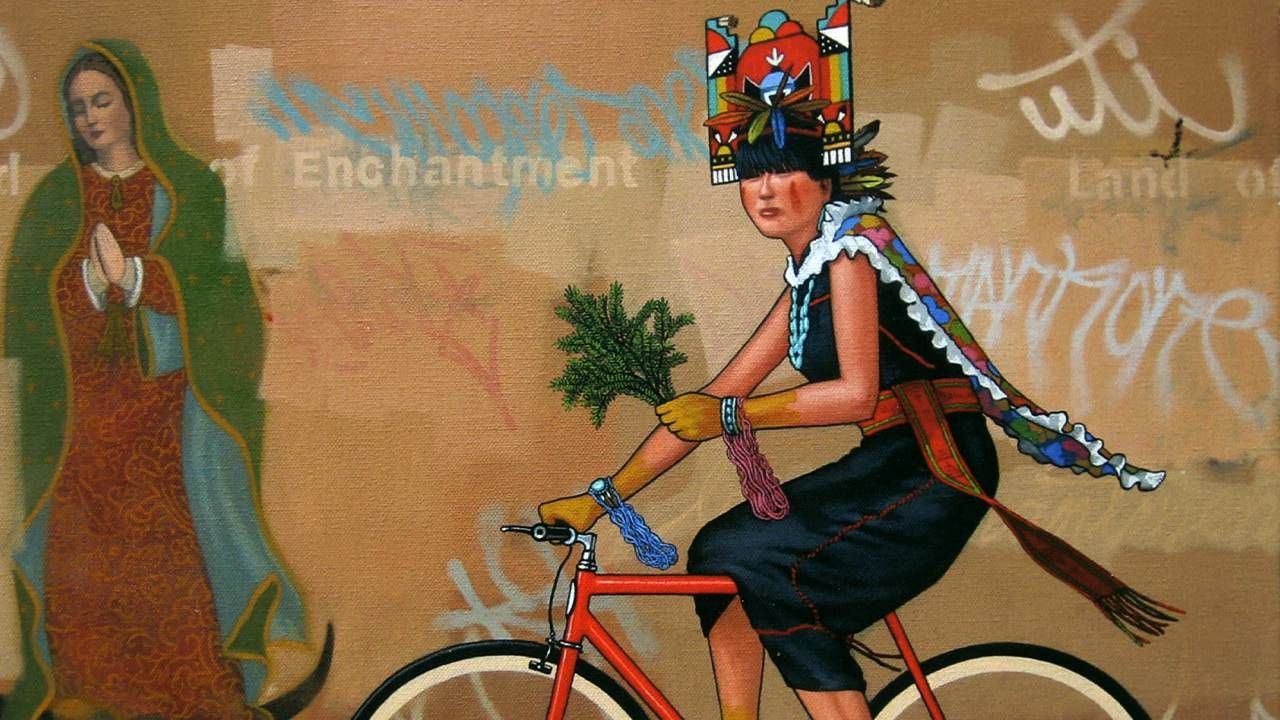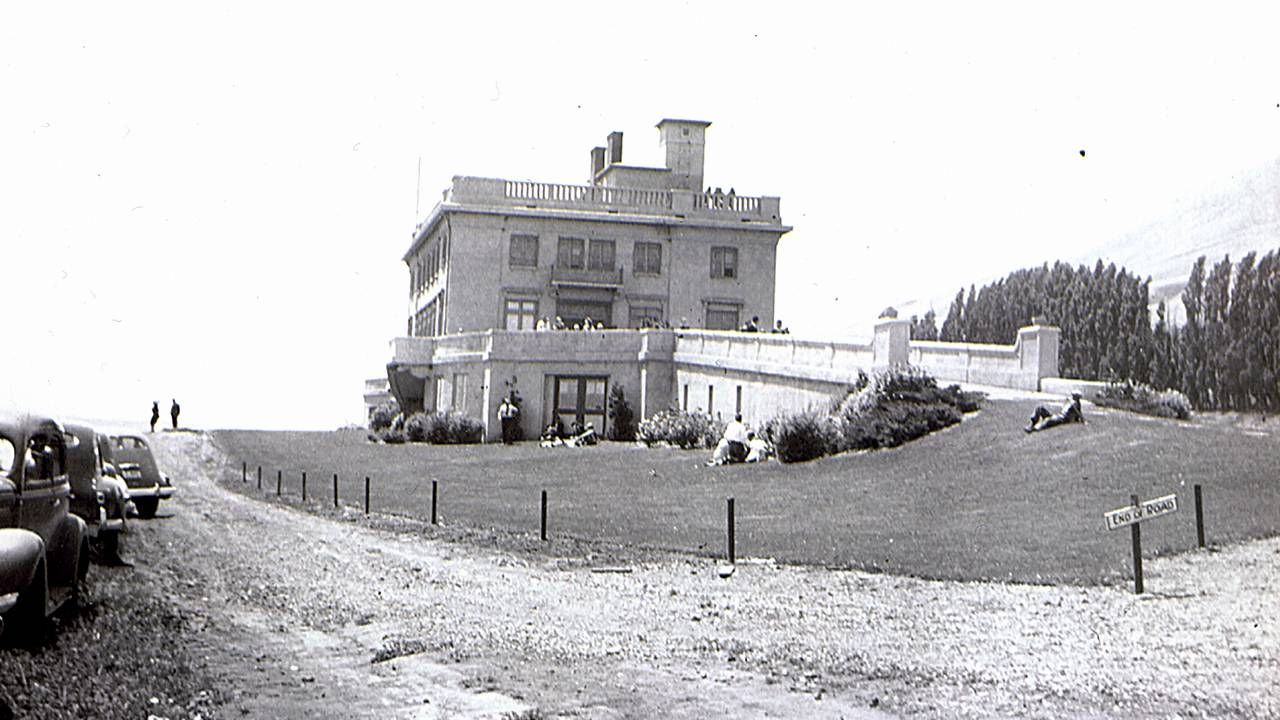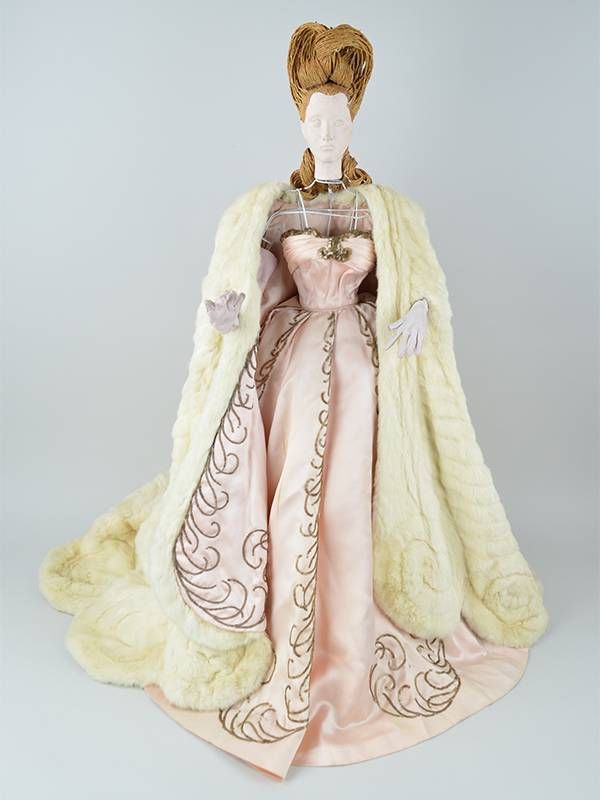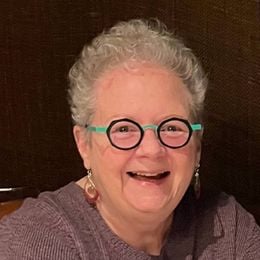'Eclectic' Collections at Washington's Maryhill Museum Draw Visitors
Rodins, Native American works and Romanian artifacts are on view
Perched high on a bluff above the Columbia River Gorge, the Maryhill Museum of Art proudly lays claim to the term "eclectic" because the institution houses 10 impressive collections that are not at all related to one another. So says Steve Grafe, curator of art at the museum, a striking three-story Beaux Arts structure near Goldendale in southern Washington.

To back up his assertion, Grafe speaks of the museum's 80-plus works by Auguste Rodin, more than 3,500 items (baskets, beadwork, wooden figures and more) made by Indigenous peoples of North America and some 400 chess sets from many countries, cultures and periods. The museum also owns the gown Queen Marie of Romania wore to the 1896 coronation of her cousins Tsar Nicholas II and Tsarina Alexandra of Russia.
The museum's origin story is compelling, a tale of colorful characters with big dreams and plenty of money.
"We've tended to stick with what we have, and expand on it," said Grafe, who has been at the museum since 2009. That approach has worked well. Today the 35,000-square-foot museum is on the National Register of Historic Places and is listed as an official site on the National Historic Lewis and Clark Trail. Plus, the museum's origin story is compelling, a tale of colorful characters with big dreams and plenty of money.
A Home Transforms Into a Museum
Around 1909, Sam Hill, a successful businessman and railroad executive from North Carolina, bought land near the Washington town now known as Maryville to establish a farming community and build a house for his family. Around that same time, while traveling in France, Hill met Loie Fuller, a native of Illinois whose innovative style of modern dance was the talk of all of Europe. Fuller danced in flowing swaths of silk, sometimes lit from below by electric bulbs covered in colored gels, something that had never been done.
Alma de Bretteville Spreckels, a former artists' model and wealthy philanthropist from San Francisco, was a fan of Fuller's, and the well-connected dancer encouraged both Hill and Spreckels to buy sculptures and watercolors from her friend Rodin. (Spreckels' purchases are at San Francisco's Legion of Honor Museum, which she established.)
In 1917, when Hill decided to halt construction on his house — irrigation was one issue — Fuller urged him to open the building as an art museum. Hill liked the idea, and his extensive collection of Native American baskets was the cornerstone of one of the first exhibits.
Fast forward to 1926, when Queen Marie — one of Queen Victoria's granddaughters and a close friend of Fuller's — presided over the museum's dedication ceremony. Some 2,000 people showed up for the event, including "400 area schoolchildren and an auto caravan that originated from Portland," which is 100 miles east. The queen donated more than 100 works of art, Romanian textiles and personal items. Later, Spreckels contributed additional artifacts and furniture from Romanian palaces.

Fuller died in 1928. Hill, who left his estate to the museum, died in 1931. The queen died in 1938. "Alma, who was on the board of trustees, kept the plan for the museum moving forward," Grafe said.
The Maryhill Museum of Art opened in May 1940. Today, just outside the building is the William and Catherine Dickson Sculpture Park, with more than a dozen large-scale works by Northwest artists. A full-size replica of Stonehenge, built by Hill to honor local soldiers that died in World War I, stands about three miles east, near the Klickitat County Veterans Memorial and a monument to Hill.
Contemporary Indigenous Art 'Pushes Boundaries'
About 45,000 visitors come to the museum each year, some of whom Grafe described as "hardcore fans" of "Théâtre de la Mode," a permanent exhibit of small mannequins attired in French fashions from post-World War II.
"Ornithology: Avian Imagery from the Permanent Collection" is on display now through Nov. 15, when the museum closes for the season. "Navajo and Pueblo Jewelry: Silver, Turquoise, Coral, and Shell," displayed in a space with a lot of natural light, includes handcrafted necklaces, bracelets, earrings, rings, bolo ties and belt buckles.
"The art is all over the map, pushing the boundaries — there are so many reasons people make art."
"If I can believe the comments in our guest book, the most exciting exhibit here right now is our 'Northwest/Southwest: Indigenous Art After 1980,'" Grafe said. "I wrote really long labels, quoting the artists, so visitors can understand why the artists are working the way they are. The art is all over the map, pushing the boundaries — there are so many reasons people make art. We are in the education business here, and we need to be responsible how we educate people."
Over the years, some museum visitors have shown up at Maryhill expecting to tour an historic house.
"Maybe some wouldn't choose to visit an art museum, but once they are here, we have the opportunity to show them how wonderful the visual arts are," said Colleen Schafroth, executive director. "We have great exhibits inside for them to fall in love with, and we're also known for the natural beauty of the site, with the view of Mount Hood in all its glory."
Visitors' Opinions About Art Matter
Schafroth started at the museum in 1986, as curator of education, and was named executive director in 2001. "I fell in love with museums because I visited them as a child, with my school classmates," she said. "When I work with teachers, I tell them though art critics and curators have a vast knowledge base, they are just telling you their opinions. Everybody has different levels of aesthetics, and everyone knows right away whether or not they like something. Our visitors' opinions matter, and then they can think about why they do or don't like something here."

What does Schafroth like best at Maryhill? "Everything we have leads me to learn new things, and that's what I love about it," Schafroth said.
The permanent exhibit on Loie Fuller — posters, photographs, French art glass and memorabilia — is a favorite. The chess sets intrigue her, and she has written two books ("The Art of Chess" and "Sculptures in Miniature") about them.
"The Rodin sculptures had to grow on me," she said. "When I first came here, I didn't know much about his work, but it grew on me the more I looked at it, because I realized Rodin was talking about the human condition."
No matter which special exhibit or collection inspires museum-goers, Schafroth reported that she always enjoys hearing visitors talk about how amazing Maryhill is. "If you're in the area, you should definitely visit us," she said. "Maryhill will rock your socks off!"


